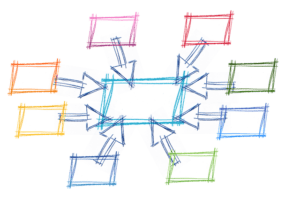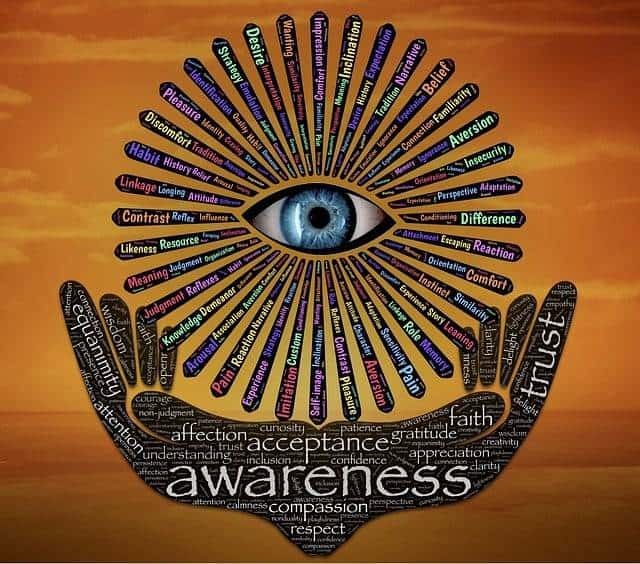Education is not solely about acquiring knowledge; it is about nurturing lifelong learners who possess the skills to navigate their own learning journey. Encouraging students to engage in self-reflection and metacognition plays a vital role in this process. In this blog, we will explore the significance of self-reflection and metacognition in student learning, understand their definitions, and discover practical strategies to foster these essential skills.
Understanding Self-Reflection and Metacognition:
Self-reflection is the process of looking inward, examining one’s thoughts, actions, and experiences. It involves introspection and thoughtful analysis of one’s strengths, weaknesses, and areas for growth. Metacognition, on the other hand, is the ability to think about and regulate one’s own thinking. It involves monitoring, planning, and evaluating one’s learning processes, strategies, and progress.
Importance of Self-Reflection and Metacognition:
Ownership of Learning:
Self-reflection and metacognition empower students to take ownership of their learning. By encouraging them to reflect on their progress, set goals, and monitor their own learning strategies, students become active participants in the learning process. They develop a sense of responsibility and accountability, leading to increased motivation and engagement.
Deepening Understanding:
When students engage in self-reflection, they gain insights into their learning experiences. They become aware of their strengths, weaknesses, and learning preferences. Metacognition enables students to evaluate their comprehension, identify gaps in understanding, and make adjustments accordingly. This self-awareness allows for deeper learning and the ability to apply strategies that support their individual needs.
Problem-Solving Skills:
Self-reflection and metacognition encourage students to think critically and strategically about their learning. They learn to analyze challenges, brainstorm alternative approaches, and adapt their strategies when faced with difficulties. These problem-solving skills are transferable to various aspects of their lives, equipping students with the ability to tackle obstacles and find effective solutions.
Strategies to Foster Self-Reflection and Metacognition:
Journaling:
Provide students with regular opportunities to reflect on their learning experiences through journaling. Prompt them with questions such as, “What did you learn today?”, “What challenges did you encounter?”, and “What strategies helped you succeed?” Encourage students to express their thoughts, insights, and reflections freely. Review and provide feedback on their reflections to guide their growth. Journaling serves as a valuable tool for students to develop self-awareness, process their thoughts, and identify patterns in their learning journey. It encourages them to think deeply about their experiences, strengths, and areas for improvement. Through journaling, students can track their progress over time and gain valuable insights into their learning processes.

Goal Setting:
Teach students the importance of setting specific, measurable, attainable, relevant, and time-bound (SMART) goals. Have them identify academic or personal goals and create action plans to achieve them. Regularly revisit these goals and engage in discussions to evaluate progress and adjust strategies if necessary. Goal setting empowers students to take ownership of their learning and provides them with a clear direction. It helps them focus their efforts, prioritize tasks, and stay motivated. By regularly assessing their progress and adjusting their goals, students develop resilience, perseverance, and a growth mindset.
Metacognitive Strategies:
Explicitly teach students metacognitive strategies such as summarizing, questioning, predicting, and monitoring comprehension. Encourage them to use these strategies during reading, problem-solving, or project-based activities. Model thinking aloud and provide opportunities for collaborative metacognitive discussions. Metacognitive strategies equip students with the cognitive tools to regulate and monitor their thinking. By explicitly teaching these strategies, students become more aware of their own thought processes, enabling them to make informed decisions about their learning. These strategies enhance their comprehension, help them identify areas of confusion, and allow for effective problem-solving. Through regular practice, students internalize these strategies and apply them independently in various learning contexts.
Reflective Prompts:
Incorporate reflective prompts at the end of lessons or activities. Ask students to reflect on their understanding, the effectiveness of their learning strategies, and areas for improvement. Encourage them to identify specific steps they can take to enhance their learning in the future. Reflective prompts provide a structured framework for students to engage in metacognitive thinking. They prompt students to pause and evaluate their learning experiences, enabling them to gain insights into their own progress and identify areas that require further attention. Reflective prompts also help students connect new knowledge to their existing understanding, facilitating deeper learning and comprehension.
Peer and Self-Assessment:
Foster a culture of peer and self-assessment. Encourage students to assess their work, provide feedback to peers, and reflect on their progress. This process enhances their ability to critically evaluate their own work and actively engage in their learning journey. Peer and self-assessment promote metacognitive thinking by requiring students to analyze their work against specific criteria. When students assess their own work or provide feedback to their peers, they develop a deeper understanding of quality standards and become more aware of their own strengths and weaknesses. This reflective process encourages students to take ownership of their learning, improve their work, and develop a sense of responsibility and accountability.
Scaffolded Reflection:
Gradually scaffold the reflection process to help students develop their self-reflective skills. Start with structured prompts and gradually transition to open-ended questions that require deeper introspection. Provide guiding frameworks or templates to support students as they engage in self-reflection, gradually giving them more autonomy and independence. Scaffolding the reflection process helps students develop confidence and competence in self-reflection. Starting with structured prompts or frameworks provides a framework for students to structure their thoughts and ideas. As they become more comfortable with the process, gradually introduce open-ended questions that encourage deeper introspection and reflection. By providing scaffolds, you support students in developing their self-reflective skills at a pace that is appropriate for them, ensuring they build a strong foundation for metacognitive thinking.
Classroom Discussions:
Facilitate classroom discussions that promote metacognitive thinking. Engage students in conversations about their learning processes, strategies, and challenges. Encourage them to share their experiences, insights, and reflections with their peers. These discussions foster a collaborative learning environment where students can learn from each other and develop a metacognitive mindset. Classroom discussions provide opportunities for students to articulate their thoughts, reflect on their learning experiences, and engage in metacognitive conversations. By sharing their strategies, challenges, and successes, students gain a broader perspective and learn from the experiences of their peers. These discussions also help students develop metacognitive vocabulary and deepen their understanding of their own learning processes.
Feedback and Reflection Loop:
Incorporate regular feedback opportunities that prompt students to reflect on their work and growth. Provide constructive feedback that highlights strengths, areas for improvement, and specific strategies for enhancing their learning. Encourage students to reflect on the feedback received and set goals for future improvement. The feedback and reflection loop creates a continuous cycle of improvement. By providing timely and specific feedback, you guide students in reflecting on their work and understanding areas that need further development. Encouraging students to engage in self-reflection based on feedback helps them take ownership of their learning, make necessary adjustments, and set goals for growth. This process promotes metacognitive thinking and supports students in developing their ability to monitor and evaluate their own progress.
Metacognitive Reflections in Assessments:
Integrate metacognitive reflections as a component of assessments. Ask students to reflect on their learning process, the strategies they used, and the impact of those strategies on their understanding and performance. This encourages students to develop a deeper understanding of their own learning and helps you gain insights into their metacognitive development. By incorporating metacognitive reflections into assessments, you provide students with an opportunity to demonstrate their understanding of their own learning processes. It encourages them to think critically about their strategies, evaluate their effectiveness, and consider alternative approaches. This practice also helps you gauge the level of metacognitive awareness and skills students have developed, allowing you to tailor your instruction and support accordingly.
Model Metacognition:
As an educator, model metacognitive thinking and reflection by sharing your own experiences and reflections on your teaching practice. Discuss how you adapt your strategies, set goals, and monitor your own professional growth. By demonstrating metacognitive practices, you inspire students to adopt these skills themselves. When you model metacognition, you provide students with a tangible example of how metacognitive thinking benefits learning and growth. By openly sharing your own reflections and growth as an educator, you create a supportive and safe environment for students to engage in metacognitive practices. Your modeling encourages students to view self-reflection and metacognition as essential components of the learning process and motivates them to apply these skills to their own learning journey.

In Conclusion:
Encouraging self-reflection and metacognition in students is a transformative approach that empowers them to become active participants in their own learning. By incorporating strategies such as journaling, goal setting, metacognitive strategies, and reflective prompts, educators create an environment that fosters metacognitive thinking and cultivates lifelong learners. Through self-reflection, students gain insights into their strengths, areas for improvement, and learning preferences. Metacognition equips them with the tools to plan, monitor, and adjust their learning strategies, leading to deeper understanding and improved academic performance. By nurturing self-reflection and metacognition, educators empower students with essential skills that extend beyond the classroom walls. Students develop the ability to set meaningful goals, evaluate their progress, and make informed decisions about their learning.
Self-reflection and metacognition foster a growth mindset, resilience, and a sense of ownership over one’s own learning journey. Students become more self-directed and independent learners, capable of identifying their own strengths and areas for improvement. They develop problem-solving skills and the ability to adapt their strategies when faced with challenges. These skills not only benefit their academic pursuits but also prepare them for future endeavors in higher education and the workforce.
As educators, it is our responsibility to create a supportive and nurturing environment that encourages self-reflection and metacognition. By implementing strategies such as journaling, goal setting, metacognitive strategies, and reflective discussions, we foster a culture of continuous growth and learning. Through modeling and providing constructive feedback, we guide students in developing their metacognitive skills and help them become reflective practitioners of their own learning.
Let us embrace the power of self-reflection and metacognition in education, recognizing their transformative impact on student learning and overall development. By empowering students to engage in metacognitive thinking, we equip them with the essential skills and mindset necessary for lifelong success. Together, let us cultivate a generation of self-aware, reflective, and metacognitive learners who are prepared to navigate the challenges of an ever-changing world.


